Archived Water Damage Blog Posts
Category 1 Water Does Not Mean Category 1 Water Damage
3/1/2022 (Permalink)
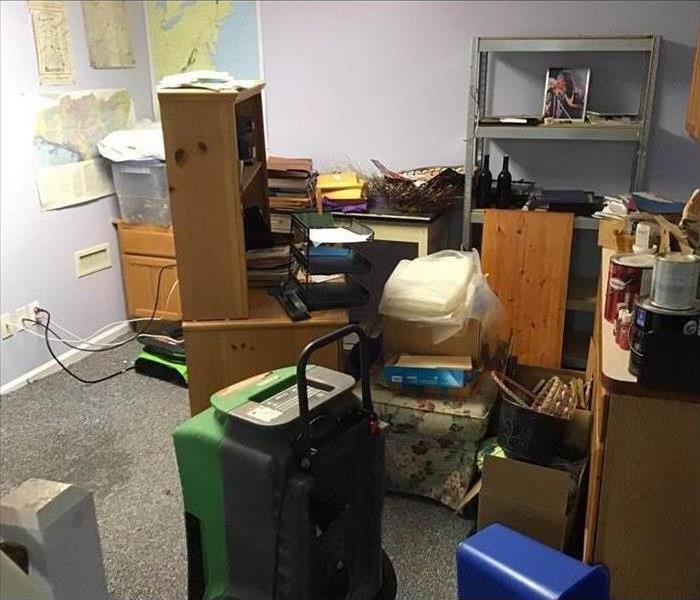 Water damage in a building in Buckingham, PA.
Water damage in a building in Buckingham, PA.
What Damage Can Water Category 1 Cause?
Any broken pipe or supply line in commercial buildings in Buckingham, PA, can lead to severe water damage. Experts in commercial restoration know that no two water damages are alike; a lot depends on the category of water involved. If you’re dealing with water damage due to category 1 water, you are exposed to sanitary water. Clean water does not pose a substantial risk to your health. What is category 1 water exactly, and what damage can it cause?
1. What Is Category 1 Water?
Category 1 water starts from a sanitary source. Examples of sanitary sources are faucets, toilet tanks, and drinking fountains. Water that falls into this category poses a minimal risk of exposure through inhalation, skin, or oral consumption. Nevertheless, be advised that this water can turn into unsanitary water based on time and temperature. Just because it’s category 1 water doesn’t mean that it cannot cause extensive damage. Clean water can cause four types of water damage.
2. What Are the Main Types of Water Damage?
Class 1 is the easiest to deal with as only small amounts of water are involved. Absorption and evaporation are minimal issues. The damage is limited to one room or one specific area. Carpet is only slightly or not affected at all, and only materials with low porosity have absorbed water.
Class 2 damage is characterized by larger amounts of water and a higher evaporation rate. At least all the carpet in a room is affected and walls are soaked in water up to 24 inches. The structure and substructure have absorbed moisture.
Class 3 water damage means that enough water has filled the area to be evaporated into or absorbed by everything in the room. It’s not uncommon that the water comes from overhead. Walls, insulation, ceilings, carpets, and sub-floors are saturated.
Specialty drying situations fall into class 4. Enough time has passed for water to affect materials with low porosity, including brick and concrete.
Clean water might be sanitary but it can be responsible for extensive damage. As soon as you notice a broken pipe or supply line, it’s important to take action.
How To Identify the 3 Types of Flood Water
2/8/2022 (Permalink)
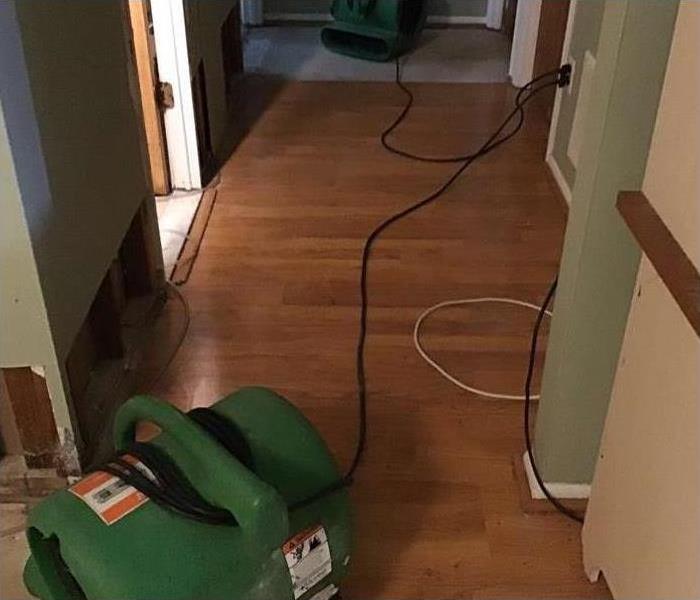 A pipe break causes water damage in a home in Whitemarsh, PA.
A pipe break causes water damage in a home in Whitemarsh, PA.
Three Classifications of Water
If you’re dealing with flooding in Whitemarsh, PA, you may be eager to start the clean-up process as soon as possible. It can be helpful to understand the three classifications of water so that you know exactly what you’re dealing with from the start.
1. Clean Water
Clean water is any water that comes from a source you could safely drink. While it can still cause a lot of damage if it floods into your home, it may not be as difficult to clean up as the other types of water.
These are common sources of clean water:
- Snow Melt
- Rain
- Sinks
- Showers
It is important to remember that even though the water may initially be from a clean supply line, it can quickly become contaminated after prolonged contact with unclean surfaces. It can be best to hire a damage restoration company to help you clean up water, no matter what type it is.
2. Contaminated Water
Contaminated water is sometimes referred to as gray water. This water can contain harmful microorganisms and substances that are dangerous if ingested. Gray water is usually the result of clean water becoming contaminated. It is not safe for drinking and should be cleaned up as quickly as possible.
3. Black Water
Black water is the most contaminated type of water. It usually comes from extreme outside flooding or sewage leaks. If it gets into your home, serious measures may have to be taken to decontaminate and disinfect the items it comes into contact with. Porous items, carpet, and drywall may have to be replaced after black water flooding.
Flooding can create a serious mess, but its effects can usually be reversed. A damage restoration company should be able to help you handle flooding from any of the three types of water. If contaminated water has entered your home, these professionals can help you with the deep cleaning procedures required to handle it.
A Helpful Guide to Water Heater Flushes
1/13/2022 (Permalink)
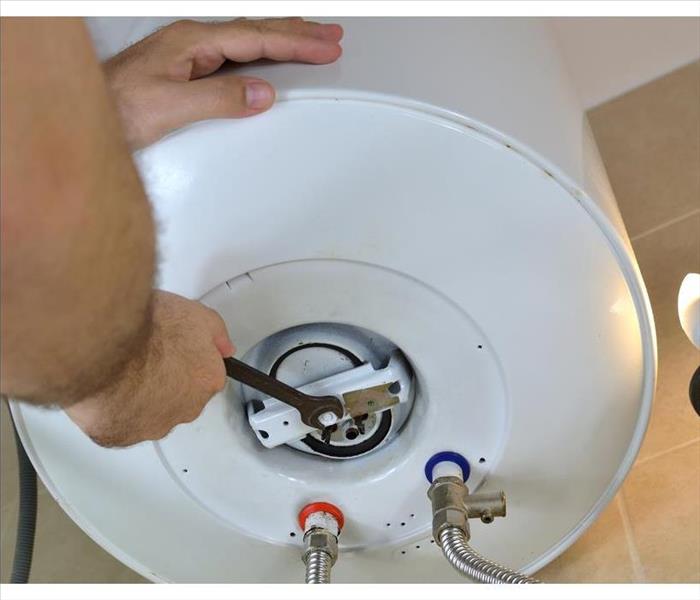 Completing a routine flush can prolong the life of your water heater.
Completing a routine flush can prolong the life of your water heater.
A well-functioning water heater is a key component inside most homes in Doylestown, PA. Like other appliances and systems inside your residence, this important piece of equipment requires routine maintenance. In fact, most professionals recommend a tank flush approximately every one to three years. Although it may sound intimidating, the process is usually straightforward and offers several benefits.
Benefits of a Water Heater Flush
Your home’s hot water source works consistently to maintain an adequate supply. Performing a water heater flush can benefit this device in several ways:
- Rids tank of built-up mineral deposits
- Helps unit run more efficiently
- May prolong heater’s life
An efficient water heater may also reduce energy costs, saving you money in the long run.
Initial Steps
To begin the cleansing process, you should complete a series of essential steps:
- Turn off the thermostat
- Disconnect heater’s power source
- Shut off cold water supply valve
- Open pressure release valve
To help prevent an air vacuum inside your lines, you may want to also turn on a hot water faucet in a sink or tub and keep it open throughout the water heater flush.
Drainage Procedures
To drain the tank, connect a hose to the drainage spigot and open the valve. Placing the other end of the hose inside a large bucket or laying it outside away from your home’s foundation may prevent accidental water damage.
Once the unit is empty, open the water supply valve and allow fluid to flow through the system until all the sediment is removed and the liquid runs clear.
Finalizing the Project
When you’re ready, close the pressure relief and drainage valves and allow the tank to fill. Once it's full, you should reopen the pressure valve to release any air pockets. Then, reconnect the power source and wait approximately 20 minutes for the water to warm.
A Useful Maintenance Procedure
Replacing a water heater can be very expensive. Although every device eventually fails after extensive use, completing a routine flush can prolong the life of your appliance, helping to ensure you have a consistent supply of hot water available.
Preparing for A Home Adjuster Visit
11/23/2021 (Permalink)
 Work with your home adjuster to process your request.
Work with your home adjuster to process your request.
Preparing for A Home Adjuster Visit
When water invades your home in Doylestown, PA, it can create a need for extensive repairs. Materials need to be tossed. Rooms need to be fixed. Furthermore, in the midst of all of the chaos, you also need to consider how to work with your insurance agency. You'll need some organization, documentation and patience, so consider the following as you prepare for the home adjuster to visit.
1. Establish a Claim
The pipe burst and your room flooded. Everything is soggy, and you just don't know what to do. Contact your insurance company that day. In fact, do it while the plumbers are there. That may seem overwhelming, but you'll need to establish an insurance claim, and you don't want to wait. Your request can be denied if you don't show immediate action. Grab your card, look up the phone number and speak to someone. During this conversation, spend time discussing your policy, asking about procedures and expectations. Because it's a trying time, take notes or record the call. You may need to review it for details later.
2. Document Everything
The home adjuster will ask for lists, so get prepared and start keeping tabs on everything. Create an Excel spreadsheet, or grab a notepad. Whatever you decide make it neat and orderly. Then, write down any money spent on the home repairs. Only make the immediate needs, and hold onto receipts. Jot down contact information and take pictures of the work. Then, begin collecting information on anything that has been ruined because you may have compensation for lost goods. Photograph damaged goods, and then look up the cost to replace each belonging.
3. Gather Bids
Allow the company to review your documents. While this occurs, meet with water remediation companies to discuss the cost of restoration. Each business should provide you with an itemized inventory, detailing materials and costs. Submit these to your insurer, and converse about which company best satisfies your needs.
Work with your home adjuster to process your request. It may take time, but your thorough notes and packet of receipts might help the process run smoother.
How To Deal With a Pipe Break in 4 Easy Steps
8/19/2021 (Permalink)
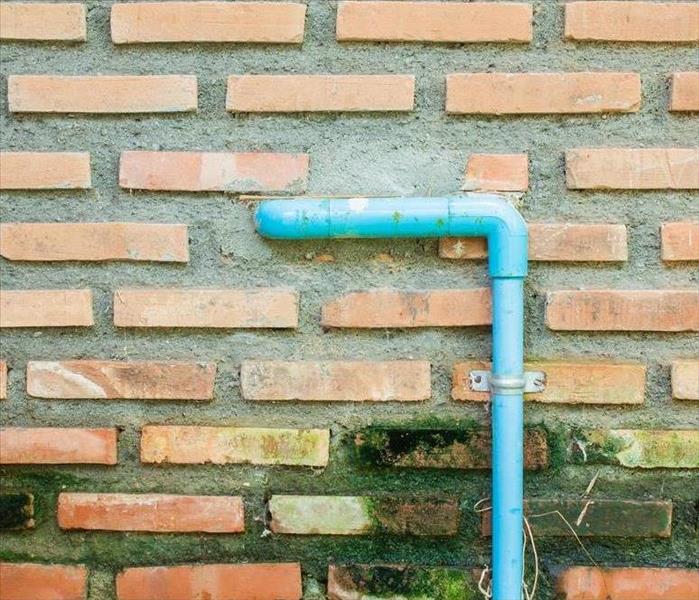 Water damage can lead to serious problems. SERVPRO can help you.
Water damage can lead to serious problems. SERVPRO can help you.
How To Handle A Pipe Break In 4 Simple Steps
Has a pipe burst in your Doylestown, PA, home? Bursting pipes can lead to loads of issues and stress. Knowing what to do in this type of situation can make the restoration process go a little smoother. Use the following tips to help you deal with flood waters from broken pipes.
1. Call in Professional Help
Water damage can lead to serious problems. You need the help of a plumber and a water restoration team to really deal with the issue. However, professionals might not be able to get there right away. Even after you've called in some help, do the next steps to help mitigate damage done to your home. If you simply wait for help to arrive, the flooding in your house could get a lot worse.
2. Stop the Water
Bursting pipes can lead to lots of water filling your home. Reduce the flooding damage by cutting off the water supply. You can shut off the water to your home by turning off the valve at the meter and the valve off of the meter. Turning off the water supply at both locations makes it more likely that the water will remain off.
3. Increase Safety
Before you can get someone in to fix a broken pipe, you need to make sure it is safe to walk through the standing water. This means turning off the electricity in your home until you have assessed the safety of the water. If you fail to do this step, anyone who walks into the standing water could get zapped.
4. Move Important Belongings
Once the relative safety of the water has been determined, you can start moving your personal possessions out of the waterlogged area. Start by moving your most important possessions to a high position. If you have time, you can move other pieces out of harm's way as well.
No one wants to deal with burst pipes. However, if the situation arises in your home, it's better to know how to deal with it than to be left scratching your head. Fast responses can help reduce the damage done to your home.
Important Maintenance To Prevent Water Damage
6/22/2021 (Permalink)
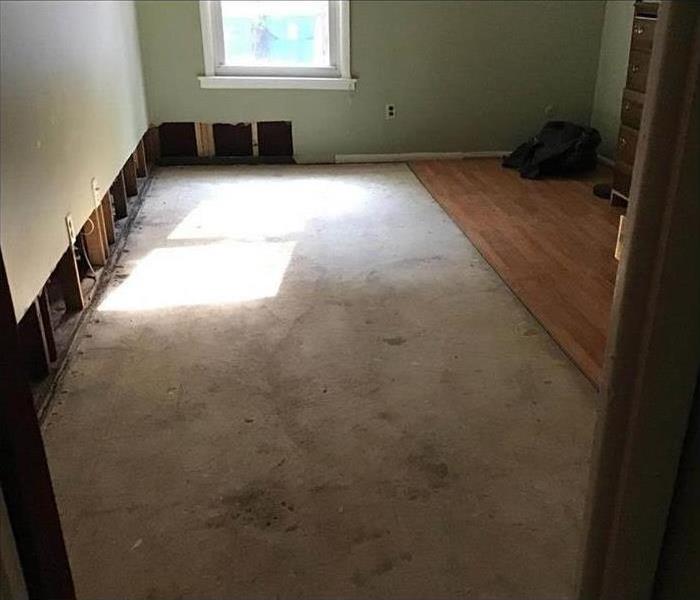 Water damage in a bedroom
Water damage in a bedroom
Prevent Water Damage
You never want to find water in a home where it doesn't belong. Standing water in your basement, bathroom, or living space can be a big headache. You have to call a residential water cleanup crew to get the long process of cleaning your New Briton, PA, home started.
- Assess the damage.
- Make a cleanup plan.
- Remove standing water.
- Replace damaged building materials.
With so much to do after a water-related disaster, it's easier to do whatever you can to prevent the damage.
Plumbing Components
A broken pipe can easily turn into a major disaster. If you have the plumbing components in your house inspected regularly by an expert, you may be able to avoid cracks and leaks that could lead to flooding. Not only do you want to check out the pipes, but you also need to have the toilets, tubs and other fixtures in your house inspected for faults.
HVAC Systems
The heating, ventilating and air conditioning of your house also has to be inspected. You should try to have the unit looked at in advance of whichever season it needs to be used. This will help you ensure you don't see water dripping, draining or leaking from the unit, which could cause excess water in a home.
Appliances
Even the appliances in your home have to be maintained to avoid unexpected water damage. Washing machines, refrigerators, water heaters and dishwashers could have cracked hoses, aging gaskets or faulty connections. If you have the appliances inspected annually, you'll be able to repair damages before they turn into leaks that cause a buildup of water in a home.
Doing maintenance on your pipes, HVAC and appliances call help you avoid the need to do a pipe cleanup after water floods into the livings spaces of your home. When you want to avoid working with a professional remediation team, you need to do whatever you can to keep disaster from striking your house.
The Consequences of a Plumbing Failure
3/3/2021 (Permalink)
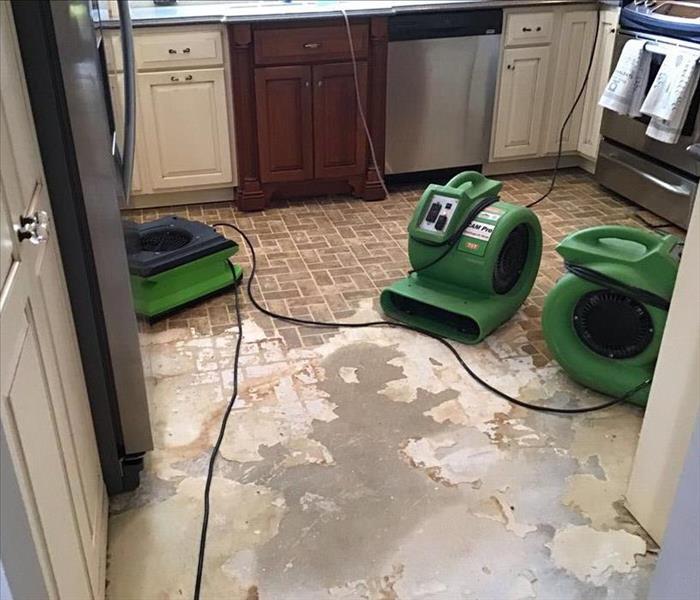 Water damage cleanup services in Chalfont, PA.
Water damage cleanup services in Chalfont, PA.
It is hard to overestimate the importance of the plumbing system in your home. When it is working properly, it carries hot and cold water to your appliances with ease. Just as importantly, when things go awry as in the case of a pipe break, the consequences are life-changing, at least for a little while. Water is spilled into your home in Chalfont, PA, threatening to cause damage to walls, flooring and personal belongings. Therefore, it makes sense to pay attention to what your plumbing system is telling you. Several signs indicate it is time for a plumbing inspection or regular maintenance on your pipes.
The Importance of Listening to Your Plumbing
Just as with a vehicle, sounds are sometimes the first sign that something is wrong, that a pipe break or some other calamity is imminent. The following noises in the plumbing indicate trouble:
- Whistling when a water faucet is turned on
- Chattering or banging
- Squealing
Your first option when you sense trouble is to try and troubleshoot the problem yourself. The more experience you have at this, the more likely you will be able to avoid a disastrous pipe burst by your efforts. Secondly, calling in a licensed plumber is often a good option. While this might be more expensive, it could save you the trouble of a major water spill in your home.
The Value of Professional Water Damage Mitigation
Any time water spills into your living space, it is smart to consider the services of a water damage restoration company. Highly-trained technicians will arrive on the scene quickly and work to fix broken pipe and take other actions. They will remove any standing water with the help of powerful pumps and vacuums. An experienced crew has the goal of restoring your home to its original condition. Experts can help you minimize the consequences of a pipe break in your home.
The 3 Types of Water Damage
2/10/2021 (Permalink)
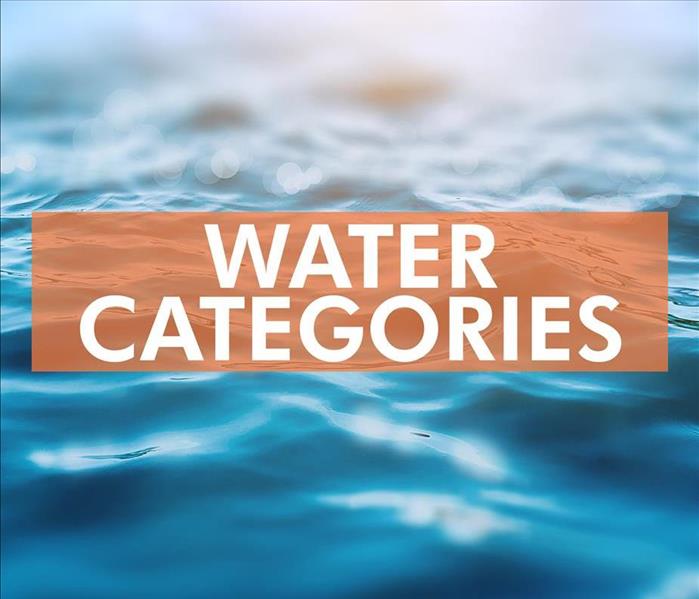 No matter what category the water is, you should promptly hire a remediation team to perform the cleanup.
No matter what category the water is, you should promptly hire a remediation team to perform the cleanup.
Types Of Water Damage
Whether you experience a water pipe repair job gone wrong or a sewage backup, you must immediately remedy the water damage. The first step to fixing your New Briton, PA, business's damage is to hire a water cleanup company. They will categorize the water, so the proper remediation steps are taken.
1. Category 1 or Clean Water
Category 1 water damage is the least worrisome and is often caused by a broken pipe, overflowing sink, or appliance malfunction. This is considered clean water because it is free of toxins and sewage. Typically, the restoration following the water pipe repair will be quick, and there will be few side effects for the building. However, have remediation performed as soon as possible to prevent further damage and mold growth.
2. Category 2 or Greywater
Category 2 damage is caused by greywater. This includes water from a toilet, washing machine, or sump pump backup. While the water may not necessarily be harmful, it is important to have a water pipe repair performed and follow it up with prompt restoration and sanitation to avoid potential health concerns and further damage. This type of remediation will involve water cleanup and sanitation.
3. Category 3 or Black Water
Category 3 damage must be remedied immediately and is the most dangerous of the water categories. This includes water from sewage, storm surges, seas, rivers, and other bodies of water. When this occurs, most of your items will need to be removed for cleaning, and it will take extensive disinfecting to make your business safe again. It is also probable that you will not salvage some of your items and building materials.
If you have recently experienced a flooded business, you should take action quickly. No matter what category the water is, you should promptly hire a remediation team to perform the cleanup. Otherwise, you could endanger yourself and have further damage to your building.
My Basement Flooded...What Now?
1/12/2021 (Permalink)
 Flooded basement in Chalfont, Pa
Flooded basement in Chalfont, Pa
My Basement Flooded...What Now?
Whether caused by a rainstorm or a broken pipe, a basement flood is an awful event to discover. Homeowners' insurance often doesn't cover natural disaster or weather-related flooding, but it's worth it to hire professionals to make repairs and restore your basement to its former glory. However, there are a few steps you should take before they get there that can help smooth the process.
1. Stop the Leak
Verify the source of the flooding as best you can, without going into the water. If you can see where the water is coming from, turn off the supply to that pipe, or possibly even the whole house. If a failed sump pump caused it, try to get ahold of a backup and plug it in away from the water to start alleviating the flood.
2. Call for Help
Homes are full of electrical wiring and gas appliances that don't do well with water. If you have any reason to believe electrical outlets or wiring has been compromised, do not go into the flooded area and turn off the electrical supply. If you can't shut off the electrical supply without going into the water, call your local fire department, who can disconnect your home from the electrical grid and pump the water out. Be sure to turn off gas lines as well, which should be accessible from outside the home. These are both important because shorted wiring or appliances can turn your basement flood into a house fire.
3. Call Your Insurance Agent
Once your home is safe, you can start the process of recovery. Your insurance agent should be your first call to verify insurance coverage, file a claim if necessary, and get recommendations for contractors. If the flood was due to rainwater, it may not be covered, but your insurance agent can often help guide you through the repairs process.
If you discover you've had a basement flood in Chalfont, PA, don't panic. These first steps can help you get through the immediate aftermath and start you on the path to restoring your home.
Will Insurance Cover a Broken Pipe?
12/26/2020 (Permalink)
 Homeowners' insurance often covers repairs for water damage caused by unexpected, sudden occurrences
Homeowners' insurance often covers repairs for water damage caused by unexpected, sudden occurrences
Will Insurance Cover a Broken Pipe?
A flood is sudden and almost impossible to prepare for. Cleaning up after suffering water damage can be a costly burden you were not expecting. Thankfully, homeowners insurance often covers such damage, depending on how it occurred.
1. Covered Occurrences
Damage caused by broken pipes, or sudden collapse, are generally covered by insurance. Leaks from malfunctioning washing machines or refrigerators are also included. Plumbing is considered part of general home maintenance. When your pipes and appliances break and cause damage despite normal upkeep, insurance can provide relief as you recover and clean up the mess.
2. What Is Covered
Insurance covers damage to your floor, floor coverings, walls, drywall, furniture, and belongings. Professional water damage cleanup services required to restore your home are also included in coverage. As well as services needed to achieve prompt drying of everything affected by the flood in order to prevent mold growth. Although the specifics of what is covered under every policy varies, the purpose of insurance is to help you restore your home when disaster strikes.
3. What Is Not Covered
Damages caused by gradual leaking over an extended period of time are generally not covered by insurance. Problems caused by wear and tear from regular use are also typically excluded from insurance coverage. The homeowner is responsible for keeping plumbing working properly and fixing issues as they occur. When damage happens despite these efforts, insurance may help. However, if you allow problems to fester over time so that they cause damage, you hold responsibility. While insurance does help with cleanup and restoration after leaks, insurance will often not pay to actually fix a broken pipe. It only pays for the damage caused.
Homeowners' insurance often covers repairs for water damage caused by unexpected, sudden occurrences. If you experience damage due to a leaking pipe, a flood, or a malfunctioning appliance, check with your insurance provider in Buckingham, PA, to see if you are covered.
5 Steps To Handling a Leak in Your Kitchen
10/6/2020 (Permalink)
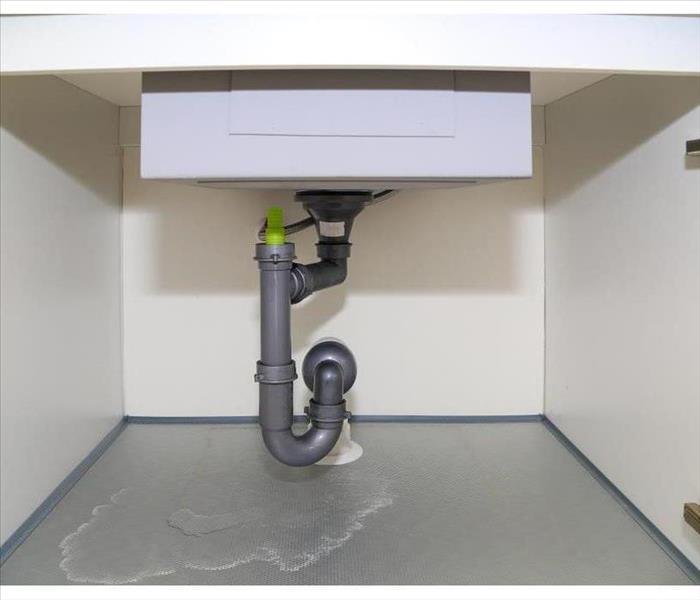 Leak under kitchen sink
Leak under kitchen sink
Dealing with a leak under your kitchen sink can be a huge hassle, and it is important to handle the problem as soon as you discover it. A leak in your kitchen can lead to flooding and water damage, and knowing what to do when you spot one can help you prevent unnecessary damage and repair costs in Chalfont, PA.
Here Are 5 Steps To Follow If You Find a Kitchen Sink Leak
1. Shut Off the Water
If you have identified a leak under your sink, turn off the main water valve immediately to stop the leak and prevent any additional flooding from the pipes.
2. Remove Excess Water
It is important to remove any excess water in your home to prevent water damage and mold. You can remove water by mopping or blotting with a towel, but do not use a vacuum cleaner. Calling a professional cleanup service is recommended for major leaks.
3. Remove Valuables
Move any valuable items and non-waterproof belongings from your floor and transfer them to a safe place to avoid additional damage. Keep electronics turned off and remove them if they are at risk of coming into contact with any water.
4. Call Your Insurance Provider
Find out what your insurance policy will cover before you begin your kitchen repair. Homeowners' policies often cover losses from frozen or broken pipes, including the cost to repair the pipes and any personal belongings that are water-damaged beyond repair.
5. Call a Professional
A professional water cleanup and restoration services company will ensure that your kitchen leak is fixed quickly and properly. They have professional equipment to dry and dehumidify your home, clean and sanitize your space, and restore your kitchen to its pre-damaged condition.
A leak under your kitchen sink can be a huge headache to deal with, and taking swift action is crucial to minimizing water damage and excess flooding. Shutting off the water, removing your valuables, and enlisting the help of professionals will ensure that you return your home to good operating condition as quickly as possible.
Drying Out Your Commercial Building After a Flood: 3 Tips
8/21/2020 (Permalink)
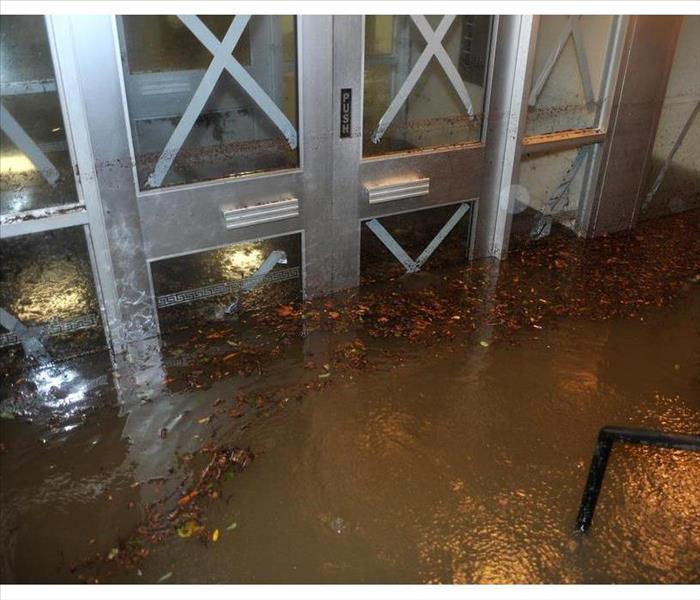 Flood damage in New Briton, PA
Flood damage in New Briton, PA
Damage Tips To Keep In Mind As You Restore Your Business
Flood damage to your New Briton, PA, business can be unexpected and affect you in a variety of ways. From rooms filled with standing water to ruined building materials, you may not know where to begin when it comes to effective cleanup. Ensuring that each area is completely dry after a flood can prevent secondary damage, such as mold growth, and there are a few damage tips you can keep in mind as you work to restore your business.
1. Decrease Humidity
If a pipe burst and caused flooding in your building, the standing water can create humid conditions that may cause mold to develop on walls and ceilings. Reducing the humidity in affected areas may lower the risk, and there are several ways you can accomplish this. First, turn off your building’s air conditioner and open windows to allow humidity to escape. You can then use ceiling and floor fans to keep air circulating until help arrives.
2. Move Items To Dry Areas
When it comes to cleaning tips, removing important items to higher ground may seem obvious, but you may not think about it in the aftermath of a flood, especially when the damage seems extreme. If it is safe to enter a flooded area, salvage sodden documents, furniture, and other important items and allow them to dry. You may want to freeze wet papers until you can contact a restoration service.
3. Call in a Water Damage Service
Some types of floodwaters, such as those caused by a clogged toilet or sewer backup, may contain toxins and solid waste that could harm you. Calling in a flood mitigation and cleanup service can help you recover from this type of issue, as flooding technicians might be able to provide you with additional damage tips as they work to dry and restore your building.
When flooding affects your New Briton, PA, business, beginning the drying process can seem daunting. However, learning a few water damage tips may give you the confidence to proceed.
Can a Fire Sprinkler Activate Accidentally?
8/5/2020 (Permalink)
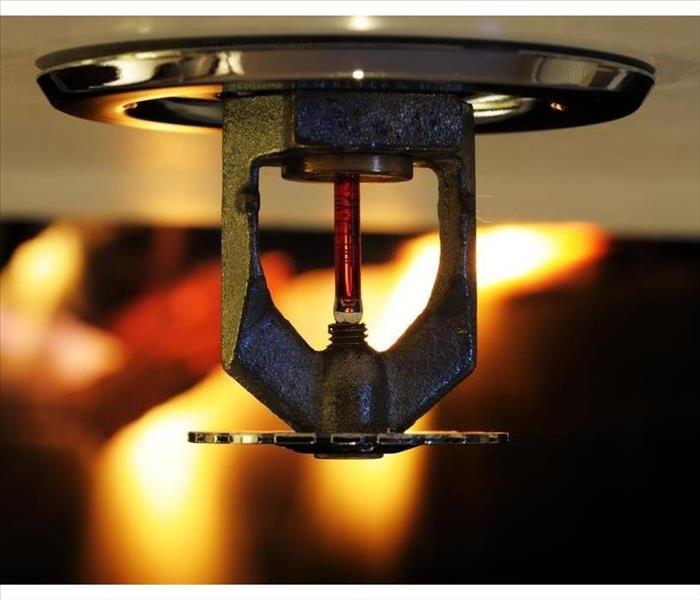 Keep your fire sprinklers well-maintained to reduce the risk of flooding on your commercial property.
Keep your fire sprinklers well-maintained to reduce the risk of flooding on your commercial property.
Every business owner in Doylestown, PA, should invest in fire sprinklers for their commercial property. When sprinklers work as designed, they can significantly reduce the damage created by a fire. Because sprinklers emit much less water than a fire department hose, they also reduce the chance of significant flooding in the building.
Accidental Activation of Sprinklers
Sprinklers are rarely triggered unless a fire is nearby, but there are a few instances in which a sprinkler can be activated by accident.
Accidental overheating - Sprinklers become activated by high heat, so you don't need to worry about burning your pizza in the oven. However, if sprinklers are located near an area of high heat, such as close to heaters or skylights, they could potentially be set off. To eliminate possible flooding caused by a sprinkler that is located in a high-heat area, you can purchase high-temperature-rated sprinklers. These will only be activated at temperatures over 200 degrees.
Corrosion to parts of the sprinkler - If a sprinkler is very old, it could become corroded. This can weaken parts of the system that release water. It's important to conduct regular inspection and testing of your sprinklers to avoid potential water damage.
Damage to the mechanism - Improper installation can potentially damage the mechanism of the sprinkler, which can cause parts of the system to loosen over time. Always make sure that sprinklers are installed by a professional with proper training.
In addition to conducting a routine inspection of your sprinklers, you should also have them inspected annually by a professional. This will greatly reduce the risk of accidental activation. It's also important to note that if water does damage your property, you must contact a water damage repair professional as soon as possible. Experts are trained to safely and effectively remove the water and dry the structures in your building.
Keep your fire sprinklers well-maintained to reduce the risk of flooding on your commercial property.
What Can Cause a Toilet To Leak?
6/4/2020 (Permalink)
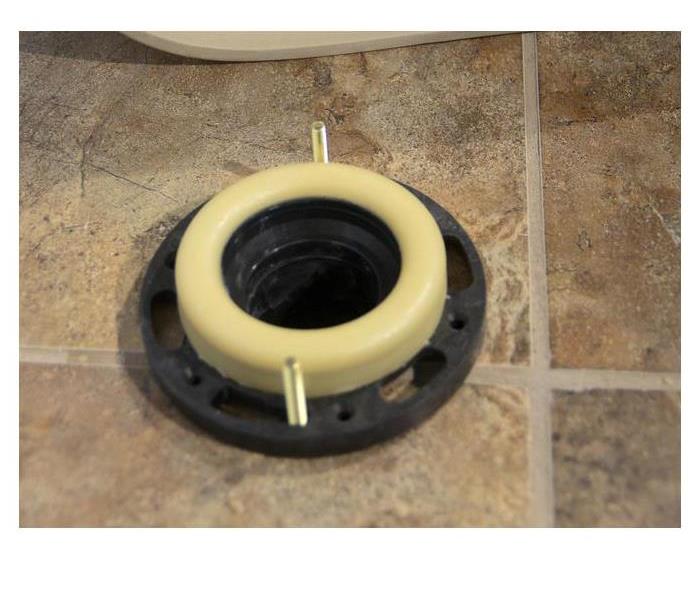 A wax ring around the toilet creates a seal that prevents leaking
A wax ring around the toilet creates a seal that prevents leaking
What Can Cause a Toilet To Leak?
If you have ever witnessed a leaking toilet in New Briton, PA, it can be a concerning sight to see. However, there may be a few simple reasons as to why you are experiencing this type of bathroom leak as well as a complex one. If the leaking becomes too severe, you will need to call in a water damage company to prevent further harm.
1. Wax Ring
A wax ring around the toilet creates a seal that prevents leaking. If this seal is dried out or improperly installed, it will cause a leak. Replacing the wax ring could resolve the problem.
2. Toilet Flange
The flange is what the base of the toilet sits on. Bolts are used to attach the toilet to the flange. If the bolts or flange are broken, this could cause a leaking toilet. To fix this issue, you will need to replace the flange or bolts.
3. Tank
A cracked tank can also cause a bathroom leak. If the crack is small, you might be able to fix it with waterproof epoxy. However, if the crack is large, you might have to replace the tank.
4. Pipes
Rusty pipes can also cause a toilet to leak. These pipes will have to be replaced to fix the issue. You will need to seek professional help.
5. Flapper
The flapper in a toilet tank opens when you press down on the toilet handle. A flapper that has seen a lot of wear and tear can stop working properly, causing water to continuously flow through when it is not supposed to which will create a leaking toilet. If this is your problem, the flapper must be replaced with a new one.
There are many reasons why you might be experiencing a toilet leak. This type of bathroom leak could be caused by a worn wax ring, a broken flange, a cracked tank, rusty pipes or a flapper that has seen far too many uses.
How To Replace an Old Wax Gasket Under a Toilet
5/28/2020 (Permalink)
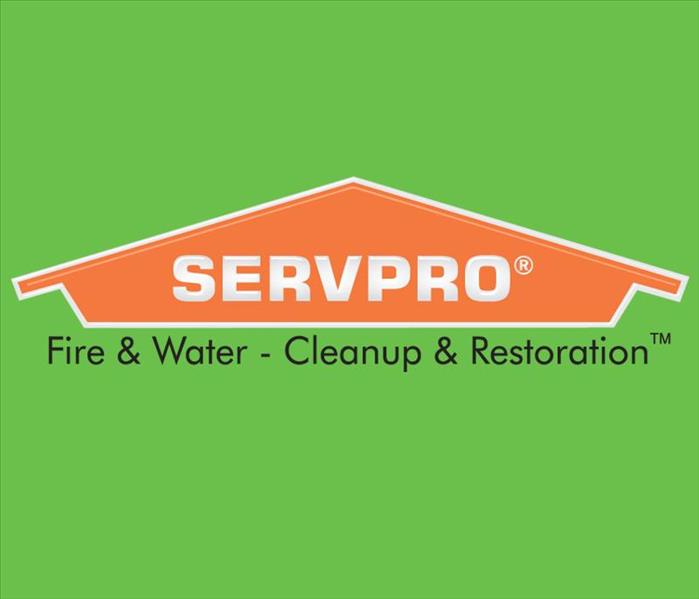 A leaking toilet is a common issue in homes. You can repair most problems alone, but professional help is useful.
A leaking toilet is a common issue in homes. You can repair most problems alone, but professional help is useful.
There are many reasons for a leaking toilet, but the explanation is typically linked to the location of the leak. For example, a leak from a tank likely relates to a loose connection, but a leak from the bottom of the toilet is most likely because of an old wax gasket. While there are several water mitigation companies in Buckingham, PA, you can replace an old wax seal by following a straightforward process.
Shut off the water supply
Remove the toilet
Remove and replace the wax gasket
Reseat the toilet
Shut Off the Water Supply
Before you even think about replacing the wax ring causing your bathroom leak, shut off the water supply at the back of the toilet. You may also want to empty the toilet tank by flushing it. However, water may still leak out, so mitigate this problem by placing several towels across your bathroom floor.
Remove the Toilet
With the leaking toilet deprived of water, you can disconnect it from the floor. You can find two bolts on either side of the toilet, securing it to the floor. Remove the nuts and washers on these bolts. You can also disconnect the supply line from the back of the tank. Once you remove everything, lift the toilet from its position and set it aside.
Remove and Replace the Wax Gasket
By removing the toilet, you expose the wax gasket. Use a tool, such as a putty knife or screwdriver, to get under the gasket and lift it free of the floor. After removing the old ring, inspect the pipe for damage. If everything looks OK, clean the area and place the new gasket, pressing down to secure it.
Reseat the Toilet
With the new gasket in place, you can reseat the toilet. Place it over the bolts, reattaching the nuts to the base, and securing the supply line to the tank. With everything secure, turn the water back on and flush the toilet, checking for leaks.
A leaking toilet is a common issue in homes. You can repair most problems alone, but professional help is useful.
Steps To Making a Water Damage Claim
5/26/2020 (Permalink)
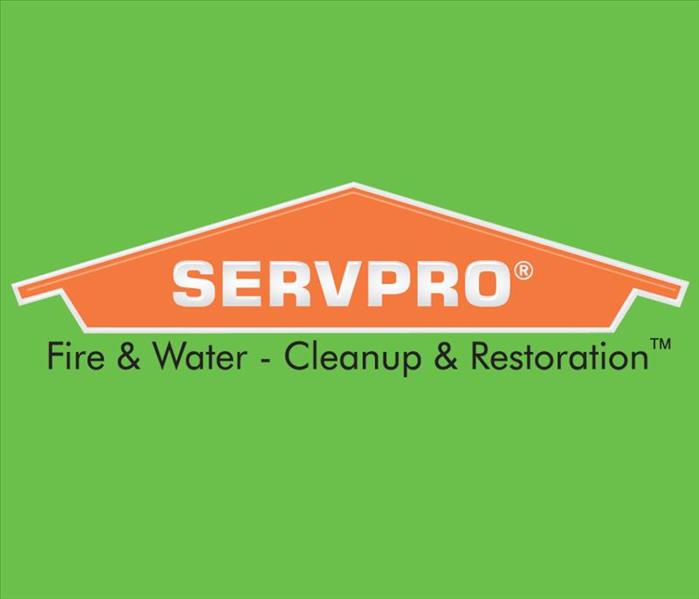 If you are careful and thorough, you should successfully make an insurance claim.
If you are careful and thorough, you should successfully make an insurance claim.
Some people may go years without having to make a homeowner's insurance claim. In fact, it may even seem frustrating to pay insurance premiums for something you don't use. However, if you experience a disaster such as flooding, you will be relieved to rely on your insurance plan to help with the cleanup and restoration process. If you have never made a water claim, it's helpful to understand what steps you should take to help this process go smoothly and successfully.
Understand Your Policy
Before you can make an insurance claim, you should know what your policy entails. Many homeowners in Chalfont, PA, have no idea what coverage limits exist in their plan and what levels of coverage are in the policy. Review yours by doing the following before filing a water claim:
Know what types of water damage your plan will cover and which it will not
Know what your deductible is for different claims.
Read the fine print so you understand any exclusions or exceptions.
Gather Information
Before you can talk to your insurance agent about filing a claim, you should be prepared to show the company the extent of the damage. Take pictures of the flood and the items it ruined or affected. Take photos of your damaged home and any ruined belongings you have. You should also write down details about the incident, including how it started and how severe it was.
Call Your Agent
Whether the flooding occurred because of a pipe burst, sewer backup, or bad weather, you should file a claim as quickly as possible. Get in touch with your insurance representative and provide him or her with the information you have assembled. You should hire a professional flood cleanup company and coordinate efforts with the technicians and your insurance.
If you are careful and thorough, you should successfully make an insurance claim. You shouldn't have to be stuck paying the bill to repair your home.
How To Handle Category 1 Water Damage Cleanup
5/10/2020 (Permalink)
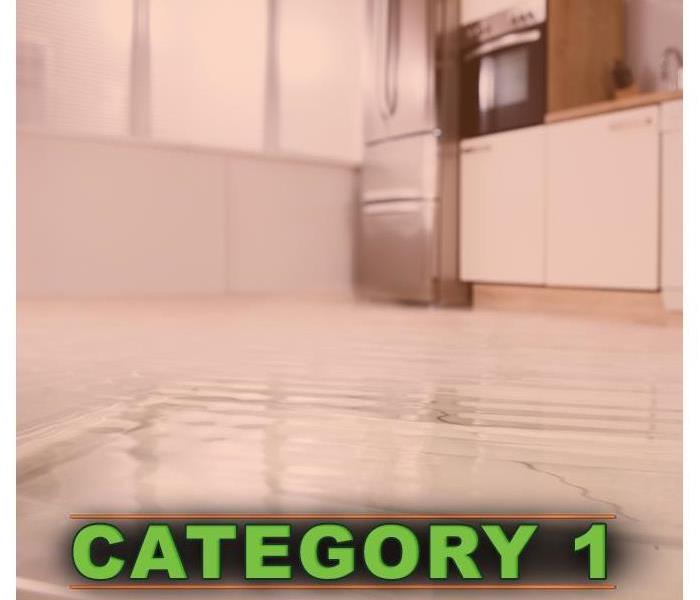 Category 1 Water Damage comes from a clean water source, a fresh water line for a refrigerator
Category 1 Water Damage comes from a clean water source, a fresh water line for a refrigerator
If you are dealing with water damage in your building in Buckingham, PA, it’s important to understand what type of water has caused the damage. Water from a clean water source, such as a broken pipe or a crack in the supply line, is called Category 1 water damage.
You may be tempted to think that you can clean up the damage without professional help. Granted, if the water is limited to a small area that is safe from electrical connections, you may be able to handle the situation yourself. If the water covers a large area, however, you need to call a water restoration service to assess the damage. Any pooled water that is not handled quickly can deteriorate into a more hazardous category.
How Do Professionals Handle Category 1 Water Damage?
The water restoration professionals can safely assess the situation and help you salvage as much as possible. They will:
- Locate all electrical and other safety hazards
- Find the clean water source and stop it completely
- Move small items out of the water and cover larger items to protect them
- Remove water using professional equipment
- Install fans to dry the area completely
Moisture can collect in drywall and plaster as well, so it needs to be inspected carefully for water damage before mold has a chance to grow.
After the area is completely dried and inspected, the restoration personnel will thoroughly clean the area and then apply disinfectants and deodorizers to all affected surfaces. Since mold and bacteria grow very fast in a wet and warm environment, it must be handled safely and quickly.
If carpeting, furniture, or equipment need to be disposed of, the professionals will discard it safely, being mindful of the environment.
You may think that clean water damage will not pose a threat to your business, but if it isn’t handled quickly and professionally, it can turn into a huge problem.
Caring for Wet Valuables After Water Damage
2/18/2020 (Permalink)
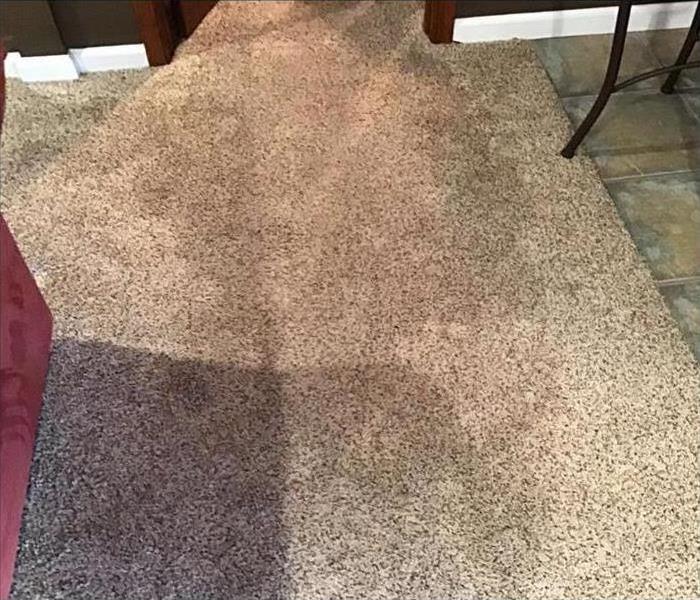 Wet carpet on a Chalfont, PA home
Wet carpet on a Chalfont, PA home
If your home in Chalfont, PA has sustained water damage from flooding or perhaps a broken pipe, you will need to replace the flooring and maybe even furniture and drywall. But what about those irreplaceable family heirlooms and other valuables? Water in your home can be devastating, but there are some great tips to help you restore the items you thought were lost.
Tips to Save Valuables
Rinse each object with clear water. Make sure to remove any dirt or other debris using a damp washcloth or soft-bristle brush, being careful not to rub the dirt into your valuable item. Many cloth items can be restored with dry cleaning. Consult with your neighborhood dry cleaner to make sure.
Water in your home increases humidity that can wreak havoc on your valuables. Reduce the humidity using fans and dehumidifiers. Open the windows, if the weather permits, to air-dry each valuable. This will help to prevent mold from growing.
Books and photos can easily tear when wet, so be careful when handling them. Any photos in frames should be loosened carefully at the edges to allow them to dry successfully. Putting books in the fridge or the freezer can help them dry while retaining their shape.
If an item has been broken, it is a good idea to wait until all of the pieces have completely dried before you try to glue them back together. Keep all of the pieces in an open container to allow the air to dry them out faster.
Any metal valuables contaminated with mud or silt should be rinsed carefully with clean water and then dried using a soft cloth.
Wet paintings should be removed from the frame. Always air-dry paintings facing up and keep them out of the sun.
Following a few simple steps can save your family's valuable heirlooms from being damaged by water in your home.
How To Unclog and Maintain Your Pipes
2/9/2020 (Permalink)
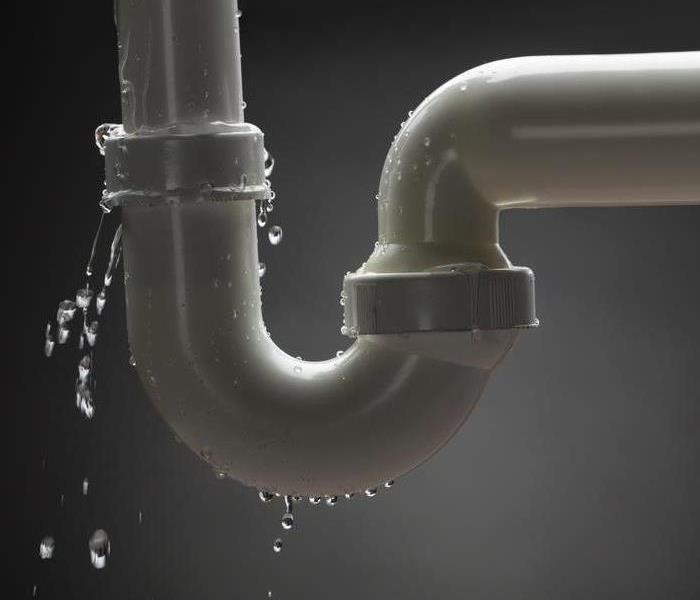 If ignored, a clogged pipe can lead to a major disaster in your home. Luckily, the issue can be resolved fairly easily.
If ignored, a clogged pipe can lead to a major disaster in your home. Luckily, the issue can be resolved fairly easily.
A clogged drain doesn’t just slow down or stop the flow of water in your Doylestown, PA, home. It can also lead to a buildup of water pressure within the pipes. This, in turn, can cause the pipes to rupture.
Water damage repair specialists can help in this situation. However, if you want to avoid pipe break entirely, you can use a snake to clear a clog. Below is a quick tutorial.
How To Fix a Clog in 3 Steps
Push the End of the Snake Into the Drain
Turn the handle of the drum as you push the auger into the stopped drain. Continue this cranking process until you meet resistance.
Rotate the Snake
When you rotate the snake, it should either chop up or entangle the clog. If that doesn’t work, try pulling the snake out of the drain to see if the clog comes with it.
Run Water Through the Drain
To make sure the clogged drain is fixed, try running the water at its maximum force. This should push any remnants of the clog through the pipes.
Preventing Clogs
If you want to avoid having to unclog pipes in the future, there are some simple preventative measures you can take. Kitchen pipes are a frequent source of clogs due to food or garbage going down the drain. A sink strainer can capture these foreign objects, allowing you to dispose of them appropriately.
Ideally, your garbage disposal should help you eliminate kitchen waste without clogging up your pipes. While the disposal is eating up your trash, turn on the sink and let the cold water flow into the disposal. Keep the water running for another minute after the disposal turns off. This will guide the trash to the main drainpipe, where it is less likely to cause a clog.
If ignored, a clogged pipe can lead to a major disaster in your home. Luckily, the issue can be resolved fairly easily.
The Main Steps of the Water Restoration Process After an Interior Flood
2/3/2020 (Permalink)
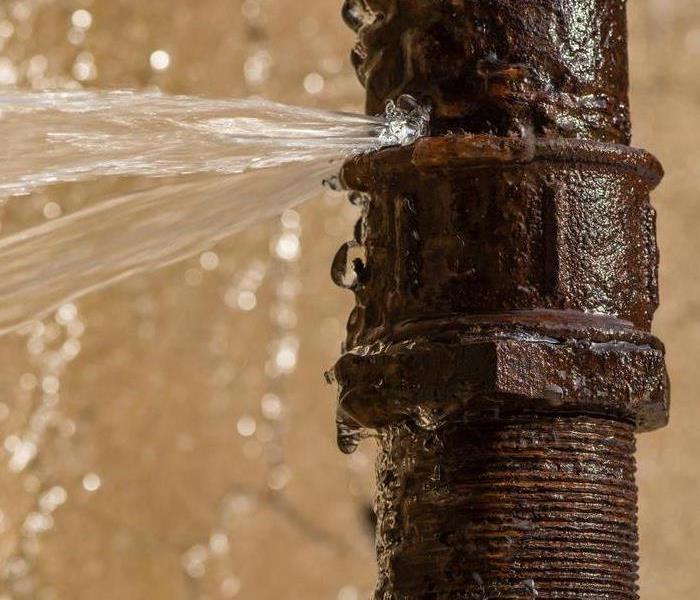 A pipe burst or sewer backup is devastating for any homeowner.
A pipe burst or sewer backup is devastating for any homeowner.
A pipe burst or sewage backup is two in-home disasters that almost every homeowner dreads. Depending on the extent of the damage, a water damage restoration company in Doylestown, PA, need to be called as well as your insurer. One thing that can help a frustrated homeowner through the flood recovery process is to know and be aware of the remediation steps.
Removal of excess water
Discarding of debris
Drying the space
Disinfecting and cleaning the area
Restoring to pre-flood conditions
Removal of Excess Water
A busted water line can quickly develop into a full-blown flood, especially if you are away on vacation when the break occurs. The first goal, then, of any remediation company is to stop the source of the flooding and remove the excess water. They will accomplish this task by using water pumps and shop-vacs.
Discarding of Debris
Once the flooding is controlled and the water removed, the company will begin removing debris and personal items from the space. In most instances, these items will be brought to a dry location where the family will be allowed to sort through things. However, in cases of sewer backups, that might not be the case as items are too contaminated to salvage.
Drying the Space
After every that was damaged by the pipe burst is removed, the crew will begin drying out the affected area. They will most likely use a combination of fans, dehumidifiers and air movers to speed the process along.
Disinfecting and Cleaning the Area
When the area has had time to thoroughly dry, the remediation service will use commercial cleaners and disinfectants to clean and sanitize all surfaces. Wall cavities that have been stripped of insulation and drywall will probably be soaked in a bleach solution to reduce the risk of mold.
Restoring to Pre-Flood Conditions
Finally, when all the removal and cleaning is finished, the team will begin the restoration process. The goal of any restoration is to restore a property to pre-flood conditions.
A pipe burst or sewer backup is devastating for any homeowner. However, with the assistance of a trained group of professionals, the process is both manageable and recoverable.
Everything You Need To Know About Category 2 Water Damage
1/31/2020 (Permalink)
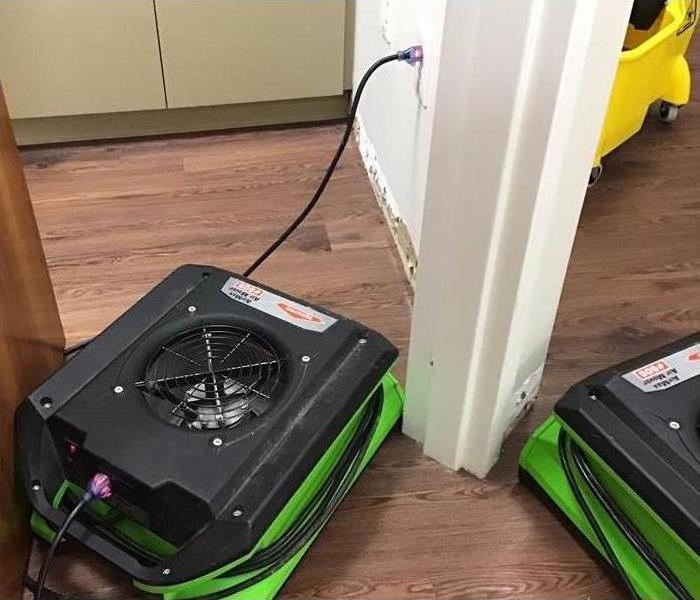 Water damage in Chalfont, PA
Water damage in Chalfont, PA
When a commercial remediation company is working with your business after water pipe repair, its specialists may use terminology that can help them better identify the damage. One of these measures includes classifying the water into three different categories. Depending on the circumstances, they may refer to your situation as Category 2 Water Damage. You can assist these professionals by learning more about these classifications.
What Is Category 2 Water?
Unlike Category 1 water damage, which is caused by pure water with no known pollutants, Category 2 damage is caused by water that contains a certain amount of bacteria, chemicals or other contamination. Consumption or exposure to this water can lead to a range of symptoms, from discomfort to mild illness. As a result, remediation workers use special clothing and protective gear when navigating areas flooded with Category 2 water.
Where Does It Comes From?
Category 2 water can have multiple sources. These locations often pollute what could have been pure water into grey water.
- Toilet water with no feces
- A broken pipe
- Laundry machines and dishwashers
- Sump pump failure
- Clean, but standing water
- Leakage from upper floors
Remember that even after water pipe repair, the standing water is still contaminated by contact with these sources, so different protective methods from Category 1 must be used. At the same time, it does not contain highly toxic pathogens from sources such as dirt and raw sewage, which is considered Category 3 water.
How Is Category 2 Water Treated?
When remediation specialists arrive to your Chalfont, PA, location, they will generally use protective equipment to avoid direct contact. They will disable safety hazards and work with plumbers to stop the source. Afterwards, they will remove water with vacuums and other powerful drying tools. Depending on the damage, items will either be disposed or decontaminated with antibacterial products and dried.
While Category 2 damage is nowhere as serious as Category 3, it can still endanger your property and your business. Consider learning about this loss and summon professional assistance after a commercial water pipe repair.
Why Are the Pipes in My Home Noisy?
1/29/2020 (Permalink)
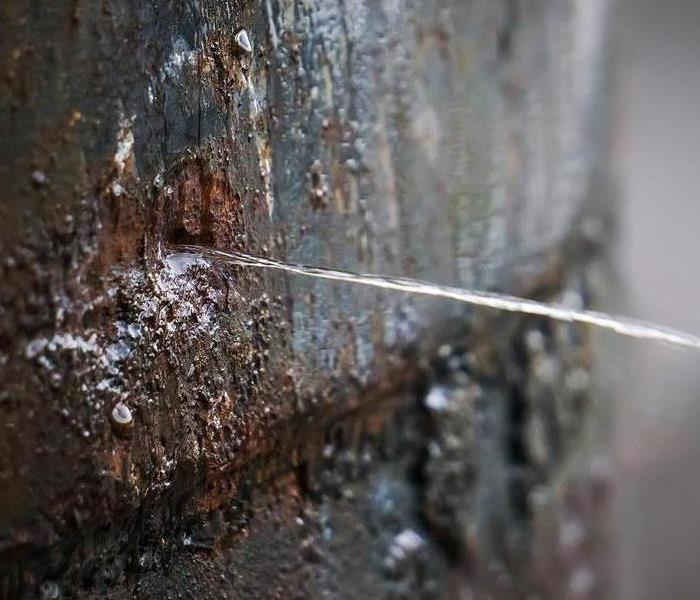 Strange noises in the plumbing of your home could be a clue that major issues are developing.
Strange noises in the plumbing of your home could be a clue that major issues are developing.
Have you noticed a loud rumbling noise or other strange sounds every time you turn on the kitchen or bathroom faucet? Not only could this be annoying, but it could be the sign of an upcoming pipe break or other significant plumbing problems in your Doylestown, PA, house. You can fix some of these issues on your own, while others may require the help of an experienced plumber. Understanding what causes these noises can help you identify the culprit and help you know how to repair it.
Water Hammer
Perhaps the most common, this noise occurs because there is too much water pressure in the pipes, which could eventually result in having to fix a broken pipe. The water will search for somewhere to go and will bang against the pipes or shut-off valve. You will not hear this sound constantly--only when the faucet it on. You can resolve it by doing the following:
Turning off the home's main water source
Resetting the system's air chambers
Opening all faucets to let all water out
Turning the water back on
Vibrating Pipes
Another high-pressure problem can cause a vibrating or thrumming sound in the pipes. This may occur simply because the pressure is above 80 pounds per square inch. You can test the water pressure in your home by calling a plumber or purchasing a threaded pressure gauge. If you don't address this noise, you could be dealing with a pipe break.
Whistling Pipes
Excessive mineral buildup in the pipes could cause this noise. Other reasons could be a worn-out mainline pressure valve or a deficient pressure regulator. Rather than face the prospects of a pipe burst, call a professional water damage cleanup team to inspect your water system.
Strange noises in the plumbing of your home could be a clue that major issues are developing. Before it's too late, follow these guidelines so you can address the matter before it gets too severe.
3 Reasons Your Water Heater May Make Noise
1/20/2020 (Permalink)
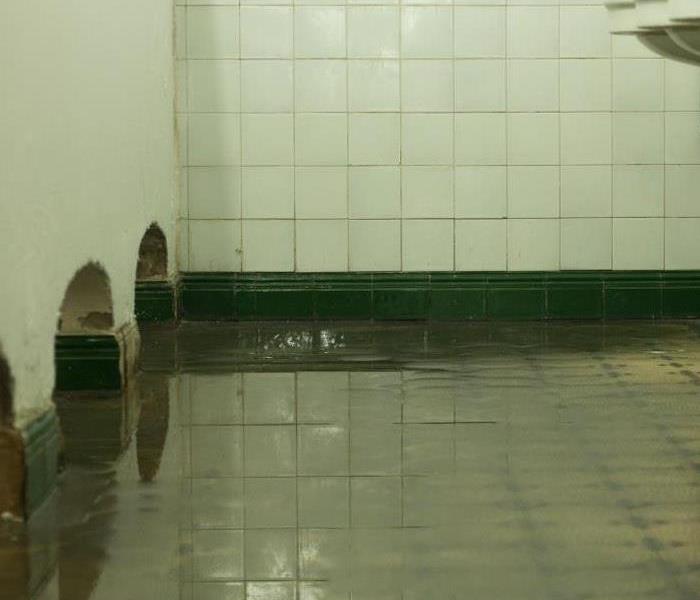 There are a number of reasons that your water heater may be making noise.
There are a number of reasons that your water heater may be making noise.
A homeowner in Doylestown, PA, with a water heater might notice the occasional noise coming from the heater itself. Some noises are normal in the course of use, while others may indicate a problem. Here are three of the most common reasons such a heater may be making noise.
1. Sediment Collecting
It’s possible that sediment can gather in your heater and collect around the heating element. This can often result in a crackling, rumbling or popping sound. This is more likely to occur with older units but can be fixed with a water heater flush. This process involves draining the water tank and rinsing it with water until all the sediment has been removed. If you notice damage to the heater during this process, it’s best to have it repaired or replaced. Water damage from a tank leak can be handled by a water damage restoration service.
2. Valve Closed Partially
When a valve is partially closed on the water heater, you may hear a screeching sound. When the water is forced through a small opening, these sounds can occur. If the valves on the heater are fully open, you may also want to check the valves on the faucets in your home.
3. Water Heating the Pipes
Hot water travels through the pipes and causes them to expand. If the water is suddenly turned off, the pipes may shift and create a knocking or hammering sound. There are wall hammer arrestors, which are fittings that can help correct this problem when they are installed in the connection between the tank and the pipes in question.
There are a number of reasons that your water heater may be making noise. They can range from sediment in the tank to a loose heating element or just general sounds of the pipes as they expand with hot water. Most of these sounds can be managed with regular maintenance. If you do notice damage, it’s best to contact a professional.
Frozen Pipes!
12/27/2018 (Permalink)
4 Signs of Frozen Pipes
With the weather continually dropping, frozen pipes become a concern that all homeowners should be aware of. Aside from the lack of running water, frozen pipes are dangerous because of their potential to burst. If they do burst it will create a larger ,more dangerous problem. Here are four signs that your pipes may have frozen:
- Low Temperature: Obviously the weather must drop low enough for water to freeze. When the temperature drops below 32 degrees Fahrenheit is when you should start to take precautions to avoid freezing pipes.
- Frost on the Pipes: This one may seem obvious as well but you should always be checking your pipes when it gets colder.
- No Water is Coming Out of the Faucet: If the water from your faucet is running low, just dripping or is completely dry then your pipes may be frozen.
- Strange Smells: When a pipe is frozen there is nowhere for the odor to go other then back where it came from. This is why you may be smelling an odd smell from your drains when your pipes are frozen.
Content by: https://www.thebalancesmb.com/how-to-tell-if-your-pipes-are-frozen-2124985





 24/7 Emergency Service
24/7 Emergency Service






















